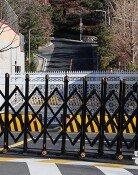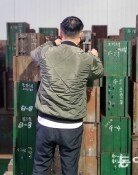Seoul flooded with heaviest rain in 115 years
Seoul flooded with heaviest rain in 115 years
Posted August. 10, 2022 07:53,
Updated August. 10, 2022 07:53
On Monday and Tuesday, a whopping 451.0 millimeters of rain (as of 2 p.m. on Tuesday), over 30 percent of the country’s average annual rainfall, poured in Seoul. It was the heaviest rain in 115 years since weather forecast began in South Korea in 1907. The torrential downpour at a maximum 141.5 millimeters per hour caused the inundation of Dorimcheon and Joongrancheon streams and multiple landslides. Roads were blocked in parts of Seoul, Gyeonggi, and Incheon, with subway lanes partially shut down. With the traffic paralyzed, citizens suffered massive disruptions in commuting. And it was followed by tragic deaths. According to the Central Disaster and Safety Countermeasures Headquarters, eight people died and six went missing over the two days.
After going through the flooding of Gwanghwamun Square in 2010, and the massive landslide of Mt. Woomyeon in 2011, the Seoul Metropolitan Government began to invest 1.53 trillion won to floodproof the 34 most vulnerable areas in the city by next year by reinforcing the durability of waterworks and pipes to stand 95 millimeters per hour heavy rains. According to the city government, this reinforcement had yet to be finished in the Gangnam Station district.
Even if the prevention system had been in place, it would be easily crippled by any downpour overwhelming the capacity like the latest one did. The Intergovernmental Panel on Climate Change (IPCC) report published in February predicted that South Korea would experience climatic anomalies more often owing to the rising air temperatures and sea levels. Prudence is key to expanding the prevention facilities, with the effectiveness and costs considered in preparation for the worst-case scenario.
The latest flooding demonstrated the need to take care of the socially vulnerable people first in the event of a natural disaster as they are often dealt with a disproportionately bigger blow. On Monday, a semi-basement home in Gwanak-gu, Seoul, was flooded, killing a woman in her 40s, her sister with development disability and nephew. Evacuation must have been difficult, considering their housing structure and physical conditions. In Hwaseong, Gyeonggi Province, a Chinese man in his 40s died while staying in a container buried in an avalanche. A system must be in place to provide precise weather forecast to the socially vulnerable and pre-emptively evacuate them in case of emergencies.
The heatwave in Europe and heavy rains in the U.S. are some of the evidence that climate anomalies are becoming recurring patterns. South Korea is no exception. A fundamental solution must be implemented to delay climate change in addition to improving the disaster prevention system and protecting socially vulnerable people.
Headline News
- Joint investigation headquarters asks Yoon to appear at the investigation office
- KDIC colonel: Cable ties and hoods to control NEC staff were prepared
- Results of real estate development diverged by accessibility to Gangnam
- New budget proposal reflecting Trump’s demand rejected
- Son Heung-min scores winning corner kick







